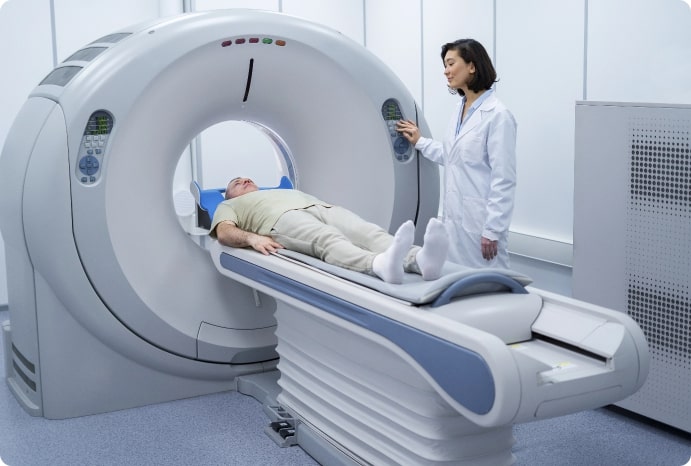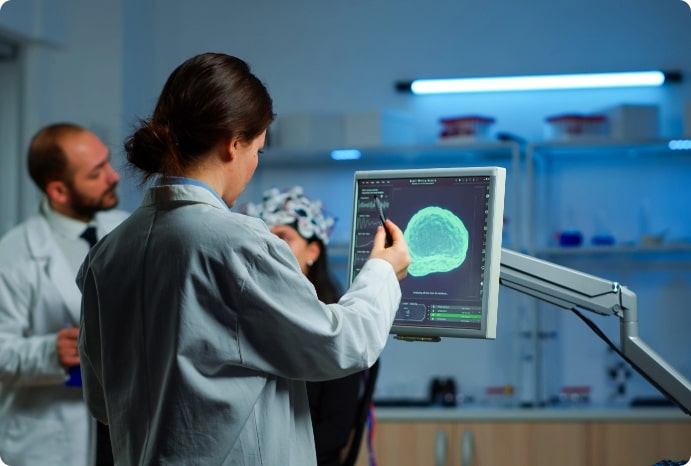
Computed tomography (CT scan or CAT scan) is a noninvasive diagnostic imaging method that is used to analyze and inspect interior body structures, anatomical structures, and detect diseases or ailments. The technology uses 3D imaging modalities to generate richer images that may be used to assess defects and malformations in any part of the body. It generates horizontal and axial images of the body using a combination of X-rays and computer technology.
While a normal X-ray can provide a lot of information, it might be difficult to find specific data about internal organs and other structures. A CT scan provides more information than a normal X-ray. It can display detailed images of blood vessels, bones, fat, muscles, and organs in any part of the body.
The X-ray beam of a CT scan travels in circles around the body. This captures multiple perspectives of the same organ or structure. The X-ray data is redirected to a computer, which analyzes the data and displays it as a three-dimensional image.
Computed tomography (CT scan or CAT scan) is a noninvasive diagnostic imaging method that is used to analyze and inspect interior body structures, anatomical structures, and detect diseases or ailments. The technology uses 3D imaging modalities to generate richer images that may be used to assess defects and malformations in any part of the body. It generates horizontal and axial images of the body using a combination of X-rays and computer technology.
While a normal X-ray can provide a lot of information, it might be difficult to find specific data about internal organs and other structures. A CT scan provides more information than a normal X-ray. It can display detailed images of blood vessels, bones, fat, muscles, and organs in any part of the body.
The X-ray beam of a CT scan travels in circles around the body. This captures multiple perspectives of the same organ or structure. The X-ray data is redirected to a computer, which analyzes the data and displays it as a three-dimensional image.
CT scans can be performed with or without the use of “contrast”. Contrast is a chemical that can be taken orally or injected intravenously to make particular tissue or organ more visible. In the case of contrast-enhanced CT scans may need you to fast for a period of time before the procedure.

When you arrive for your CT scan, you’ll be asked to change into a hospital gown. The technician doing your scan may ask whether you have removed any metal devices or medication patches prior to your arrival.
They may also review why you’re having the scan, any allergies you may have, and other special instructions.
When it’s time to begin the scan, you’ll be positioned on a long narrow table, and you may be secured in place with velcro straps or other safety devices. The table will slide in and out of the circular scanner depending on which parts of your body need to be visualized.
The technician will leave the room before operating the scanner and may give you instructions over an intercom.
As the table moves in and out of the scanner, the machine will rotate around you making a loud noise. You may be asked to hold your breath or maintain certain positions. Otherwise, you should hold as still as possible to prevent the scanner from capturing blurry images.
The entire process should take between 20 minutes and 1 hour.
CT scans don’t require much preparation. If needed, you can do a CT scan with or without contrast very quickly. In fact, this happens in most cases where a CT scan is needed to diagnose traumatic injuries or a stroke.
The only preparations you need to take before a CT scan are to remove metallic objects and medication devices from your body. This includes:
If you have any concern! contact us
Contact Us